Cheap Flights Checklist
Finding cheap flights can be hit or miss but persistence and flexibility is key to booking the best fares. Here is our checklist of well learned tips to booking affordable flights.
Our Checklist
Finding cheap flights can be hit or miss but persistence and flexibility is key to booking the best fares. Here is our checklist of well learned tips to booking affordable flights.
Track Multiple Destinations
If you’re like us and have a travel bucket list, keep checking flights to multiple destinations around when you’re planning to travel and book the cheapest option. This also helps us learn what prices are considered low or high to various places during different times of the year.
For instance, if you plan on traveling in 3 months from now and want to go somewhere tropical, you could track flights to various tropical destinations during that time and book the most affordable option.
Where to Search
We always begin searching on Google Flights. The search by map and calendar features make it easy to visually choose a destination and time to go.
We also like comparing across travel search engines like Sky Scanner, Hopper and Cheap Flights. These are our go-to search engines but we often check others as well.
Lastly, search directly through the airline’s websites. Some airlines have better routes and prices.
Know the Best Times to Travel
Have Flexible Dates and Times. Sometimes departing a day earlier or an hour later can mean saving hundreds of dollars on flights.
Travel During the Off Season. The weather might not be “perfect” but that doesn’t mean you won’t enjoy your trip. We’ve often enjoyed smaller crowds, better service and made stronger connections with local culture and other travelers during the off season.
Book the Red Eye Flight. It might not be the most comfortable time to travel, especially if you can’t sleep on airplanes, however the prices are almost always less than during mornings or mid-day.
Travel on Grim Dates. Flights are always cheaper on days like Friday the 13th or September 11th.
Travel on Thanksgiving. If you’re flying international from the US. Domestic flights are high but international ones are usually low.
Check Multiple Airports
Many major hubs have multiple airports. Flights to and from the smaller airport may be more affordable. Some examples are Newark vs JFK in NYC, Orly vs Charles de Gaulle in Paris, Narita vs Haneda in Tokyo or Ft. Lauderdale vs Miami in Florida.
If you’re based between multiple regional airports, flights from one vs the other may make all the difference.
Sometimes the best fares may be a flight away. While living in Chicago, we would often book trips out of NYC’s airports for the better fares, assuming flights from Chicago to NYC we’re also low.
Book One Way Flights
We’ve booked one way flights to hop between destinations. In one instance, we purchased one way flights from NYC to Mexico City to Cancun then back to NYC.
We’ve also booked one way flights to and from destinations through different airlines. We’ve purchased flights through JetBlue from NYC to San Juan, PR then returned with Spirit Airlines.
If you do it right, either option can end up costing less than round trip tickets.
Be Aware of Baggage Fees
We rarely check a bag however we always verify baggage fees and restrictions. They frequently change between airlines and countries. Before booking, confirm how many bags are included, what the weight/size restrictions are, if they can be carried on or have to be checked. Fees can quickly add up if you’re not paying attention.
Book the Budget Airline
We’ve all heard or been one of the horror stories on budget airlines however not all budget airlines or experiences are bad. Though there’s usually less leg room, higher baggage fees and overbooked flights, we consider it justifiable for the cost. We’ve purchased cheap flights and had great experiences with these airlines:
Jet Blue: $117/ticket direct roundtrip from Newark, NJ to San Juan, PR
Spirit: $114/ticket direct roundtrip from Newark, NJ to New Orleans, LA
Level Airlines: $288/ticket direct roundtrip from Newark, NJ to Paris
Ryanair: $67/ticket direct roundtrip from Madrid to Marseille
Norwegian Air: $280/ticket direct roundtrip from JFK to Oslo
China Eastern: $540/ticket roundtrip from JFK to Tokyo with a 4 hour layover in Shanghai
Don’t Wait to Book
If you feel good about a ticket’s price, don’t wait to book it. Chances are the price won’t be available less than 24 hours later.
Lottery for First Class
Some airlines like Norwegian Air have lotteries where you can bid to upgrade your seat to First Class. After booking, you can choose to pay more to upgrade your seat. If selected, you’ll be charged for your bid then upgraded, often for much less than the cost of First Class Tickets. We’ve flown First Class from JFK to Amsterdam and Oslo.
Volunteer if Asked
We’ve earned several hundred dollars in flight vouchers and Visa cards on multiple occasions by volunteering to take the next flight on overbooked flights.
Buy Travel Insurance
Though it’s usually an extra expense, we typically add on travel insurance to our flights. It’s come in handy a few times, especially during 2020.
Travel Credit Card
Sign up for a travel credit card to earn points that cover the cost of flights or other travel related expenses. We use the Chase Sapphire Reserve credit card. 1 point = 1.5 cents. For example, the sign up bonus of 60,000 points is equivalent to $900. The card costs $500 a year however we earn $300 back in travel credits. It also comes with a Priority Pass that offers access to various airport lounges. Any travel related expenses earn 3 points per dollar spent on the card. Over time, it adds up and more than pays itself off.
Persistence & Flexibility
If you’ve read this far, you can tell there are many ways to find the most affordable flights. It’s often a combination of methods on our checklist, the most important of which is persistence and flexibility. Being persistent about finding cheap flights and willing to be flexible to book them is often what lands us the best fares.
Traveling Sustainably
No matter the reason for traveling, there is always a reason to do so sustainably. Traveling sustainably is a great way to minimize our negative environmental impact and help preserve the natural environment.
Our Impact
No matter the reason for traveling, there is always a reason to do so sustainably. Traveling sustainably is a great way to minimize our negative environmental impact and help preserve the natural environment. Knowing how and putting it into practice is not difficult nor does not have to be expensive. Even some of the smallest efforts can do good. We’ve identified several ways we aim to reduce our negative impact while traveling. Everything from getting to the destination, choosing when to go and where to stay as well as the habits and activities we engage in all provide opportunities to travel sustainably.
Ways of Travel
Getting to the Destination . Air Travel is often the most efficient way to get to a destination but it is easily the largest contributor of emissions while traveling. There are multiple ways to help reduce or offset your emissions on a global and local scale.
Purchase Carbon Offsets. Carbon offsets do not reduce emissions but are designed to counteract them by investing in green energy, planting trees and funding the protection of vulnerable species and environments. A number of airlines offer ways to purchase carbon offsets separately from your tickets either on their site or through a partner company. Carbon Fund is an easy and reputable way to purchase offsets based on the number of miles flown.
Choose Direct Flights. The more times you take off, the more fuel is burned resulting in extra emissions. Choose direct flights whenever possible, especially for traveling short distances.
Travel by Bus or Train. If you’re traveling regionally, look into buses or trains. In some cases, these are often comparable in time, more cost effective and result in less emissions.
At the Destination. Once you’ve made it to your destination, minimizing your local impact is the goal. Here are a few ways to get around.
Choose to bike, walk or hike. In addition to being the best way to see and experience a destination, it results in little to no emissions.
Take public transit or shuttles opposed to taxis or renting a car.
If you do rent a car, opt for the eco model. Many rentals also allow you to purchase carbon offsets as well.
Depending on the destination, there may be alternative methods of travel like pedi-cabs, cable cars or electric scooters.
The Destination
When to Go. Travel to a place during the off season. This helps limit the strain on the environment and local community. We’ve found you’ll often have a much more enjoyable time with less crowds, better service and be able to make stronger connections with local culture and other travelers.
Where to Stay. Research your destination and the options available. We often stay at small and communal accommodations like hostels, eco-hotels, camp grounds, treehouses and bed and breakfasts. They typically have the least negative environmental impact and often benefit the local community.
Stay at a Hostel. Hostels often have a low environmental impact. They typically consume less energy and produce less waste than traditional hotels. In many cases, they’re often run by locals who care for and promote their community, culture and environment. Hostel World is a great place to book!
Book an Airbnb. Our favorite site to search for accommodations. You can search by property types including: earth homes, cabins, huts, tents and treehouses. These types of listings are often sustainable and make for unique places to stay!
Look for Eco Ratings. Many hotels, whether large chains or small boutiques, may have eco ratings. There are dozens or organizations that award ratings. The Global Sustainable Tourism Council (GSTC) serves as a basis for many of these. GSTC sets standards that other organizations follow as well as issues their own certifications. Look for any of their approved ratings here.
What to Avoid.
Avoid cruise ships, mega resorts and big hotels without eco-friendly ratings.
Don’t leave the AC, heat or lights on when not in your room.
Don’t request new/extra towels or sheets daily to avoid an extra wash and dry cycle.
Sustainable Habits & Activities
Outside of getting to the destination and where you stay, there are number of ways to minimize your emissions, waste and negative environmental impact.
Participate in low impact activities like visiting museums or parks, go on a picnic, take a snorkeling lesson, go hiking, zip-lining or stargazing.
Search for locally made souvenirs opposed to mass produced ones seen everywhere. Try visiting vintage shops, local markets and kitchenware stores. We usually bring home something small for our apartment or food items like spices, wine and chocolate.
Participate in a beach, trail or roadside clean up. Whether on your own or with a local organization, bring a bag and collect as much waste as you can carry in it. Recycle what you can.
Bring a reusable water bottle and metal straw. Don’t buy single-use or plastic ones.
Avoid using cosmetics and toiletries with harmful chemicals. Research the products you use regularly.
Wear reef safe sunblock and eco-friendly insect repellent, especially when visiting bodies of water.
Pay attention to waste/recycling bins. Color-coded bins often differ from country to country.
Eat more plant based and locally sourced meals. Visit a farmers market for local produce.
Don’t waste food, always take home leftovers or give them to someone in need.
Back Home
Many of these sustainable efforts can be practiced back home and continue to minimize our negative environmental impact on a daily basis. The privilege to travel is a wonderful thing, doing it sustainably helps ensure that the natural environment as well as the cultures and species it supports have a better chance at being preserved.
Traveling During Covid
Early during the lockdown, I remember looking into the sky and not seeing a single airplane for weeks. The pandemic, travel bans and lockdowns seemed to cause the world to stand still.
Lockdown
Early during the lockdown, I remember looking into the sky and not seeing a single airplane for weeks. The pandemic, travel bans and lockdowns seemed to cause the world to stand still. Our flights to Hawaii, Mexico, Japan and Morocco were all canceled. With the spare time, we started Afar Atlas as a way to remember and relive out past travels.
Eventually as lockdowns eased, we managed to take a couple regional trips to view wedding venues and get away during the winter. Though it wasn’t advisable to travel, we wanted to share the precautions we took and the considerations we made.
Travel Precautions & Considerations
Keep up to date with entry requirements. Many states have mandatory quarantines as well as ways to test out. Before traveling, we have gotten PCR covid tests with in 72 hours of traveling, had to fill out contract tracing forms and have quarantined from 3 to 14 days depending on the location.
Keep up to date with local lockdowns. Knowing what to expect before traveling and planning how to safely follow local mandates is key to enjoying your trip. Requirements change almost daily and differ from place to place. Some we encountered are mask mandates, occupancy limits, social distancing, contact tracing surveys, stay at home orders, curfews, alcohol bans and business closures. Follow the rules put in place in order to keep yourself and others safe.
Read up on airport procedures. Many airports limit terminal seating, ask travelers to distance themselves in lines and have control points set up on arrival by the National Guard to verify if you’ve been tested or not. Some airports also offer onsite rapid and PCR testing.
Read up on airline procedures.
Most airlines have HEPA filters installed inside their airplanes and re-circulate filtered air every 3-5minutes. Many have also adapted advanced cleaning methods, fogging the airplane with disinfectant after passengers deplane and before boarding. Many also offer wipes to clean your seat, window and tray table.
We flew Delta, which spaced out every other seat. We also flew Jet Blue, which did not. At the time Jet Blue did have free cancelations and re-bookings with no questions asked.
Our Daily Precautions
Whenever in transit, we wore KN-95 masks and sanitized our hands frequently. Bring extra masks and sanitizer.
We tracked our temperature, monitored for symptoms and checked our blood oxygen level with a pulse oximeter each morning and night.
We only dined outdoors at restaurants with social distanced and open air seating.
We walked whenever possible or had the windows open/cracked whenever in a taxi, even when it was cold or raining.
Because requirements differ so much from place to place, we would often defer to stricter guidelines and follow CDC advice. The main advice we followed and strongly encourage are wearing a mask, social distancing, sanitizing and getting tested.
Alternatives to Traveling
There are plenty of alternatives to traveling that we’ve engaged in over the past year. These are our 5 favorite:
Airbnb Virtual Experiences. Airbnb rolled out virtual experiences for people to connect with other cultures around the world. We’ve taken multiple cooking classes to experience the food and culture in other countries.
Balinese Cooking Class. We cooked Gado-Gado, vegetables with peanut sauce and Nasi Goreng, Balinese fried rice then toured the home of our hosts.
Okonomiyaki Cooking Class. We cooked Okonomiyaki, a savory Japanese pancake with a home cook in Osaka, Japan
Paella Cooking Class. We cooked paella and made sangria with a chef at a cooking school in Sevilla, Spain.
Experiences go further than cooking classes to local tours of neighborhoods, dance classes, drag shows and history lessons.
Start a Travel Blog. We had been wanting to start a travel blog for years. The spare time and loss of being able to freely travel gave us the perfect opportunity to start Afar Atlas. Pick out a Squarespace template and start blogging!
Plan Future Trips. Think about the first place you want to travel to after the pandemic ends and start researching the destination!
Go Near. Explore your own backyard, walk down the road less traveled, go on urban hikes or visit nearby nature sights & parks. It’s fun to reacquaint yourself with your local surroundings.
Travel on Google Maps. Choose a random location on the map and tour the streets of a foreign city or countryside, popping into places with photo sphere views. Start here and explore St. Helena.
Post Covid Travel
Until the pandemic officially ends, be smart and safe about how you travel and why. Though there’s still a ways to go, we look forward to society beating this pandemic, being able to travel to far out places, experience different cultures and interact with other travelers.
LGBTQ+ Travel
There are many LGBTQ+ friendly destinations around the world. Whether well known or not, our community has a footing in almost every city.
LGBTQ+ Friendly Destinations
There are many LGBTQ+ friendly destinations around the world. Whether well known or still underground, our community has a footing in almost every city. As the world progresses, many places are becoming more accepting of the queer community and recognizing our rights. Below is a list of some places we have traveled to and lived in. All of these places have made great strides but in ways still have more that needs to be done, especially for transgender rights.
Amsterdam, Netherlands
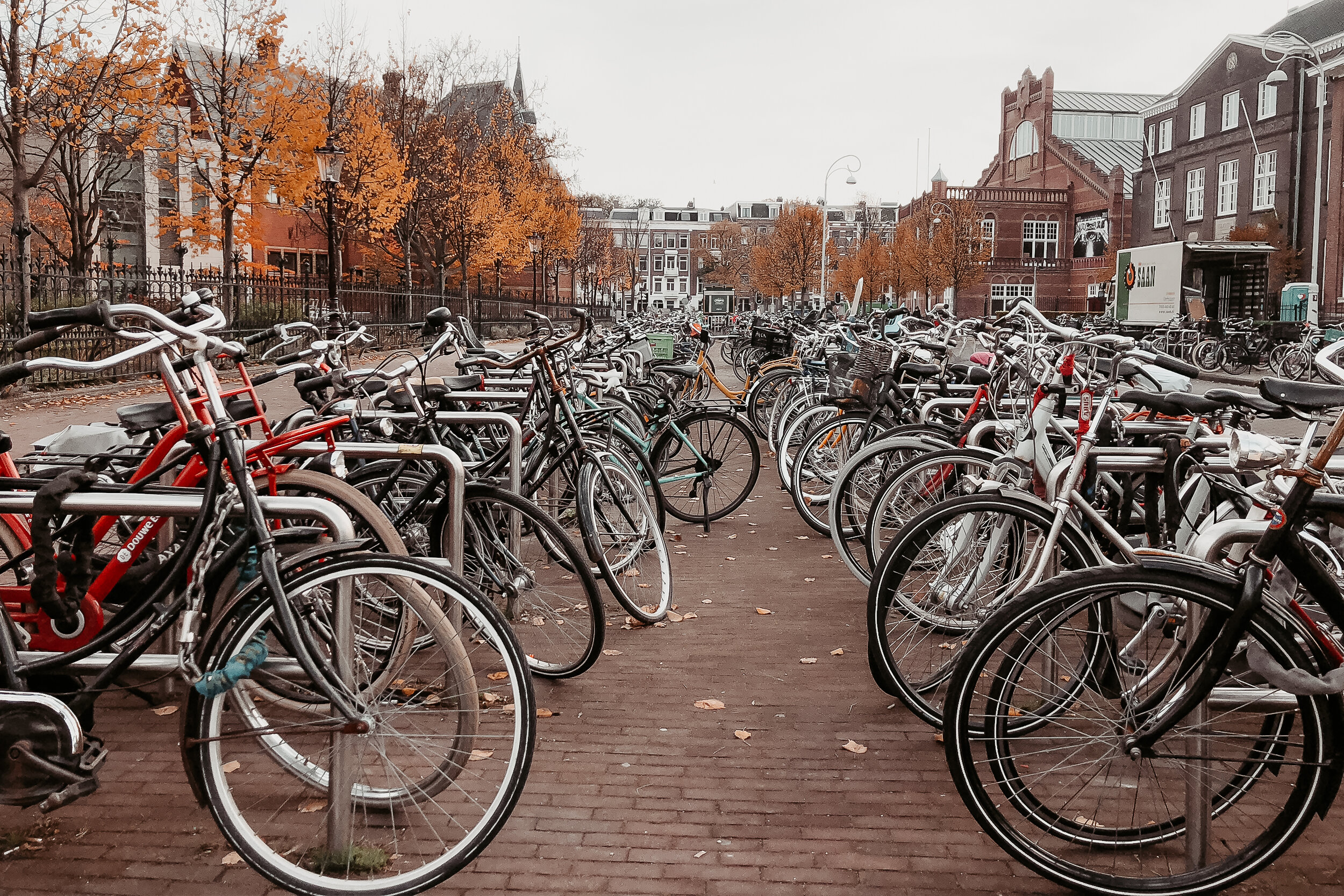

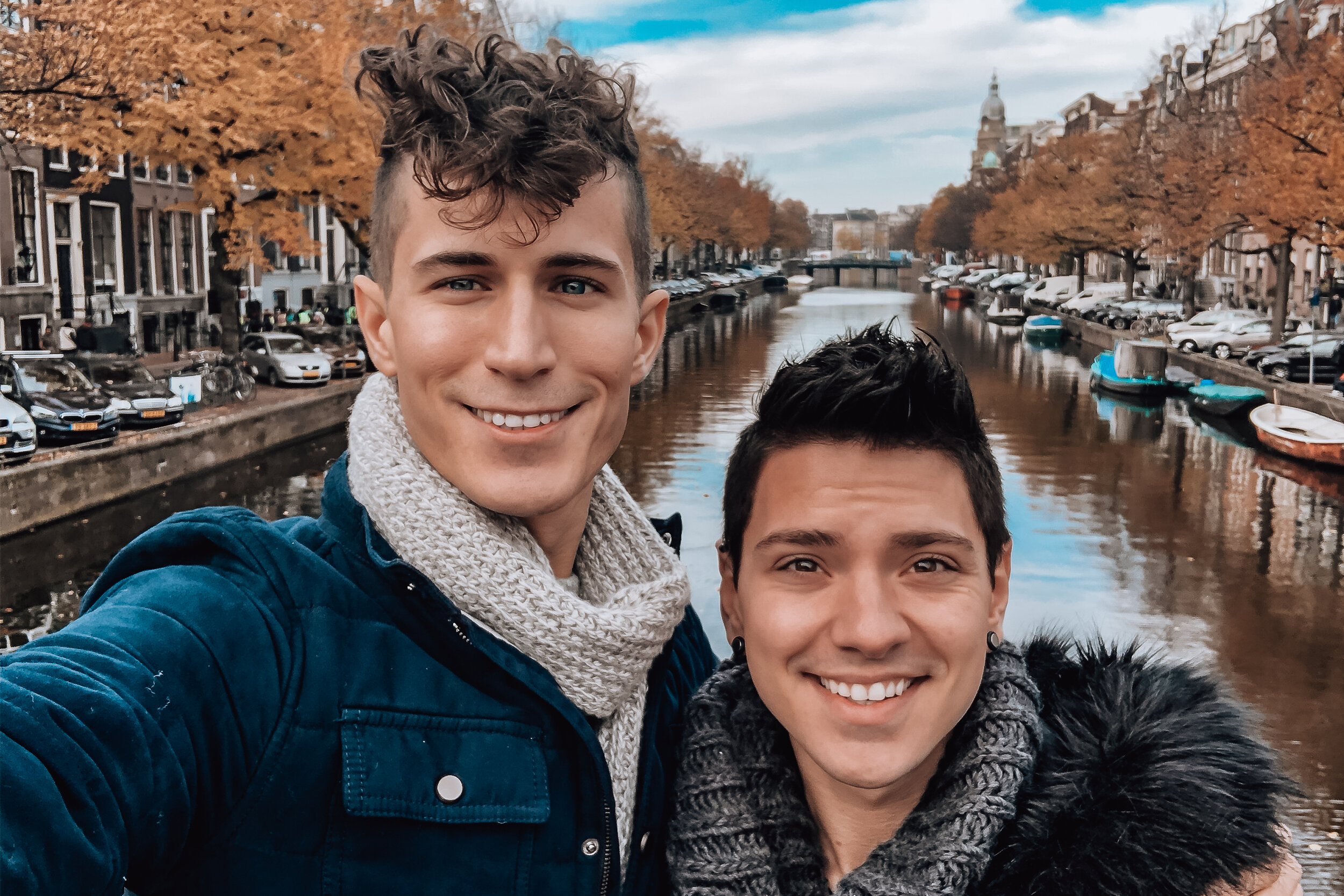

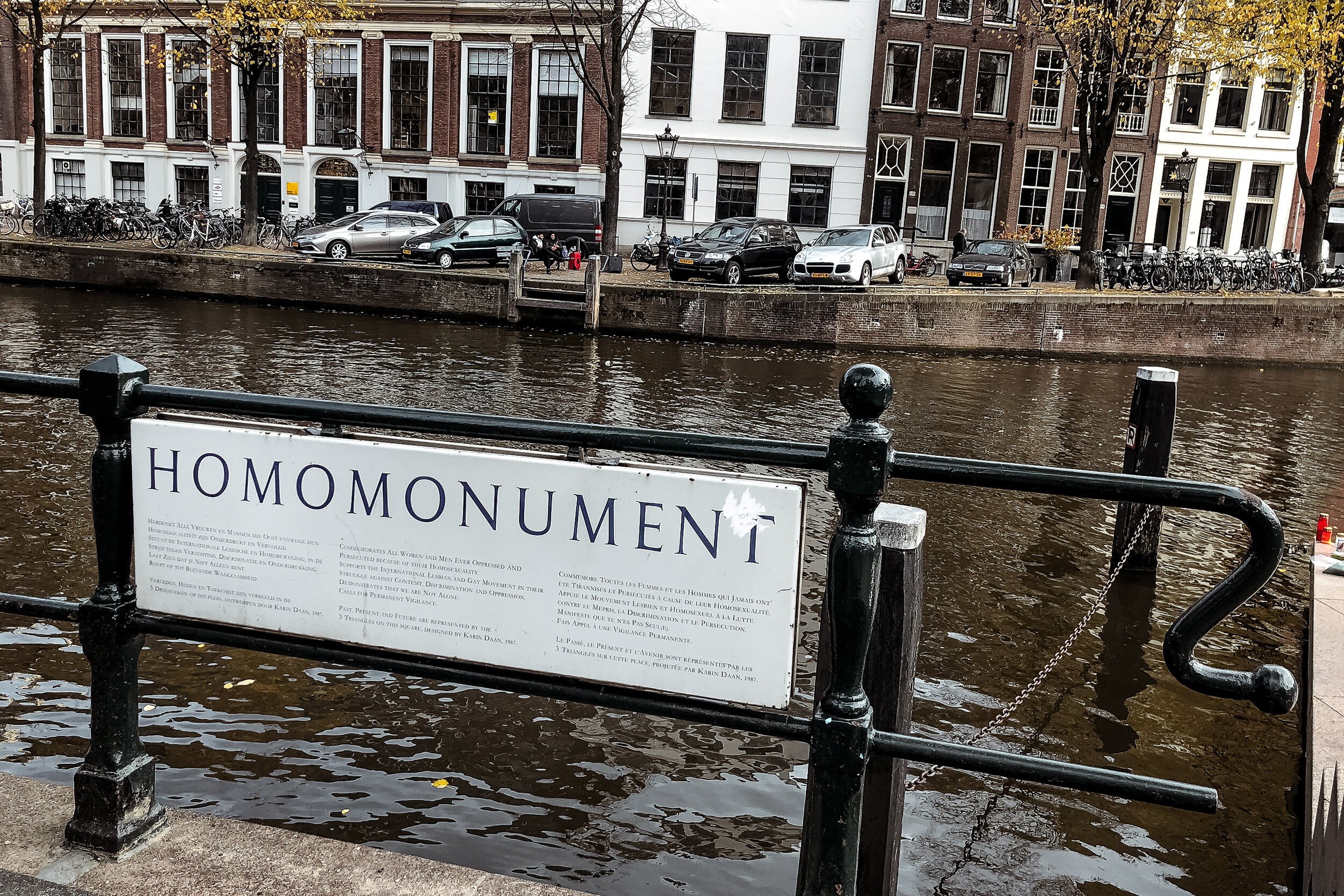
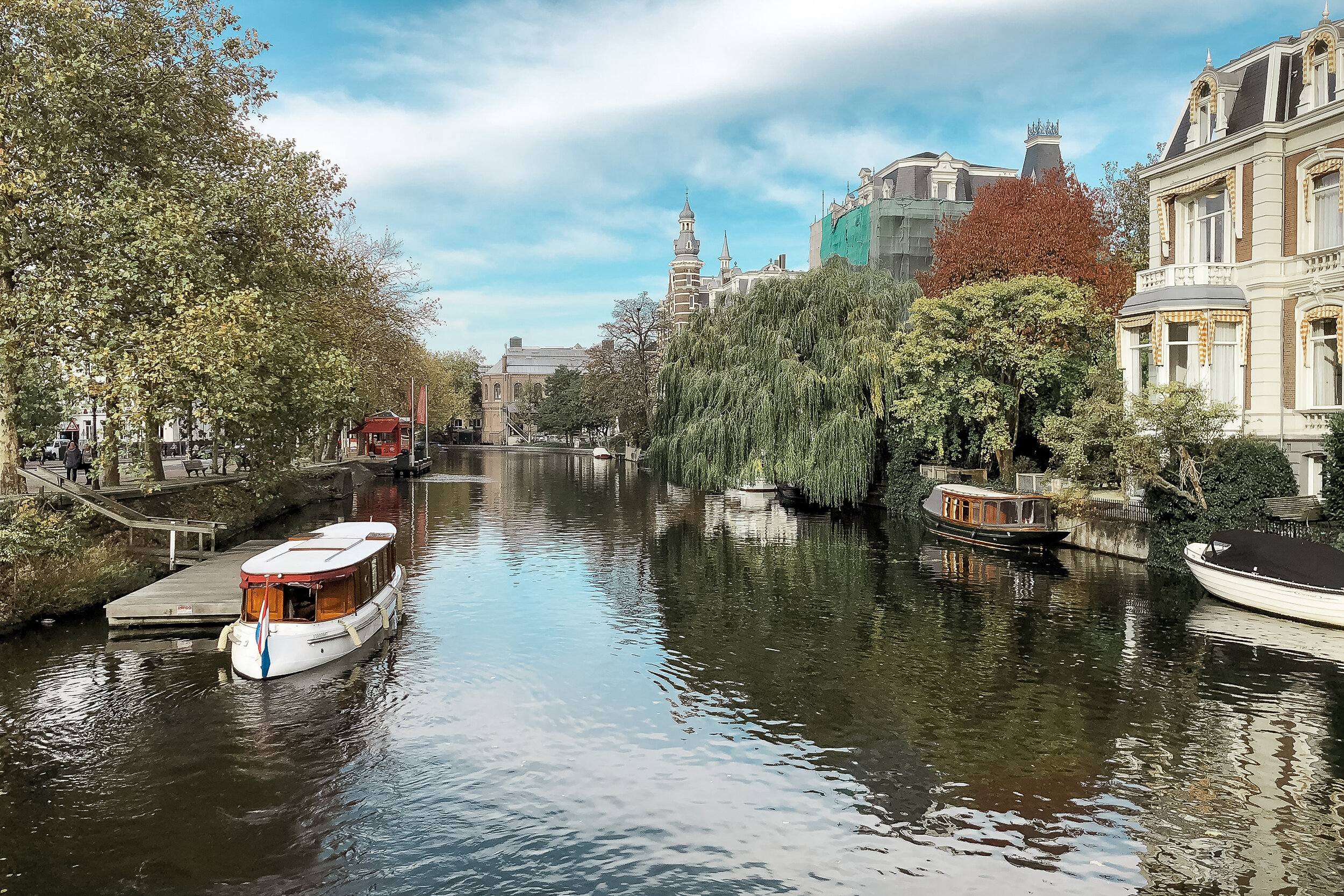
Amsterdam, with its charming buildings, picturesque canals and friendly vibes, makes for a romantic getaway for gay couples. During the day, you can rent a bike, have a picnic, bite into a stroopwafel, go on a canal cruise and view well known artwork at numerous museums. If you happen to be in Amsterdam during Pride, find your way onto a boat for the parade as it floats through the canals. Take a moment of silence at the Homomonument dedicated to the LGBTQ+ victims of the Holocaust and visit the nearby gay tourist center, Pink Point. This is a great resource to learn more about what’s presently happening in the city and where to go out. During the evening, check out the LGBTQ+ hub on Reguliersdwarsstraat for its diversity of nightlife or go see a show in the Red Light District. No matter what type of experience you’re looking to have, Amsterdam is the place to have it.
Paris, France



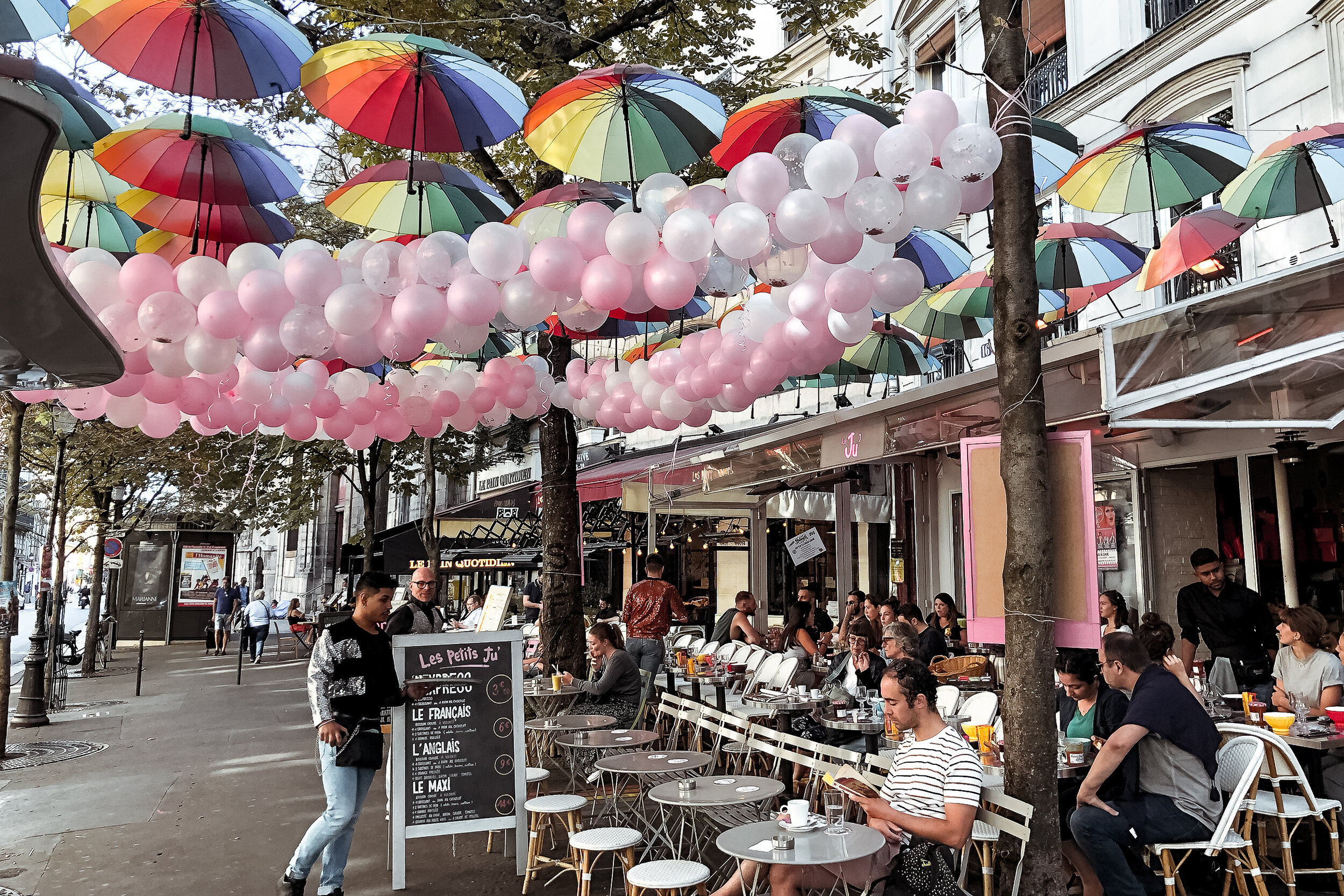

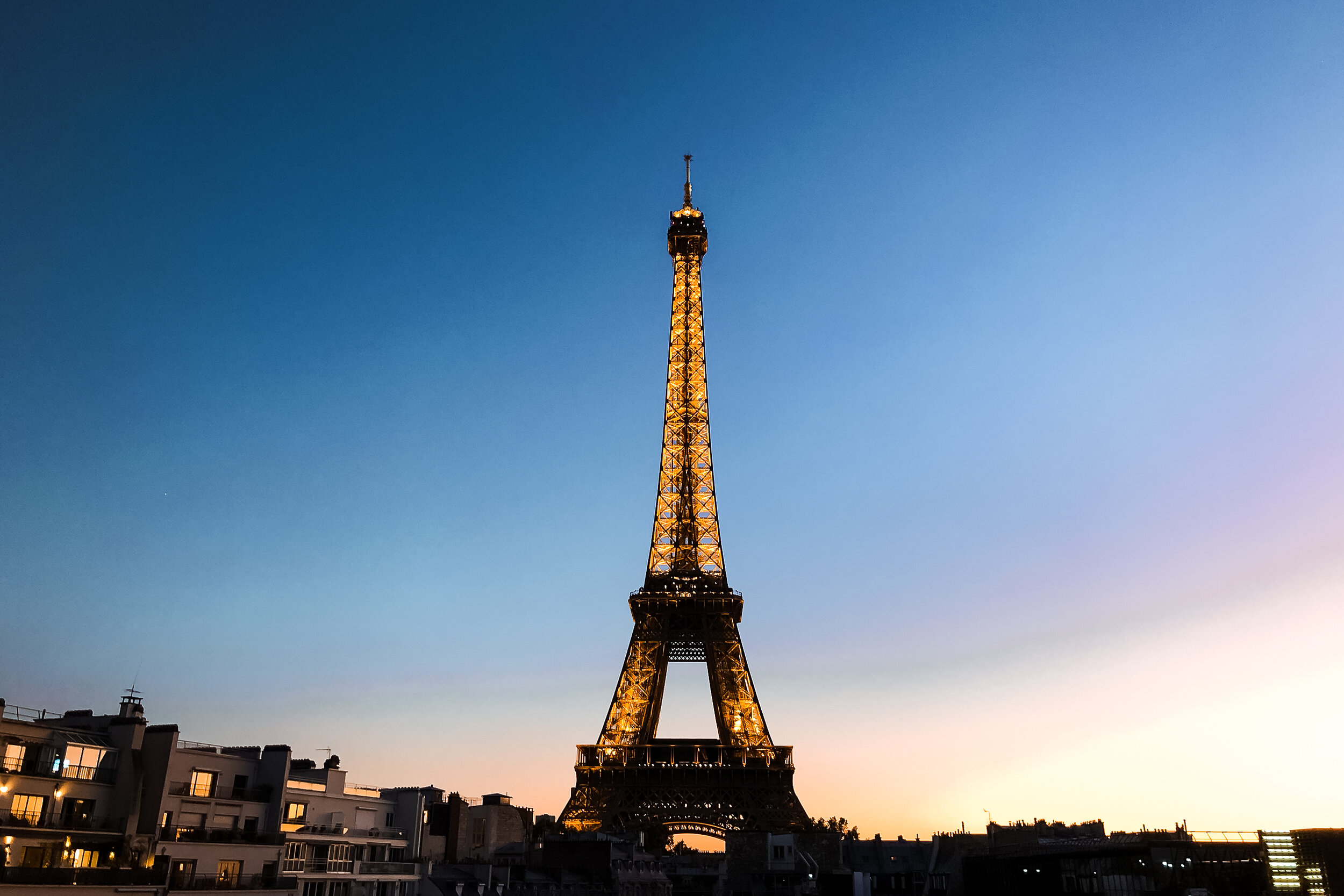
Paris, Known as the city of love, is no exception for the LGBTQ+ community. It happens to hold a special place in our hearts, as it’s where we got engaged while overlooking the twinkling lights of the Eiffel Tower. There is a well established queer presence throughout the city. In fact, it’s not uncommon to see same sex couples holding hands as they walk through the streets. Le Marais is known as the LGBTQ+ hub with its many boutiques, galleries and gay bars. Paris is an enchanting city to aimlessly wander and do as Parisians do: sip on coffee at a sidewalk cafe, eat a baguette and cheese along the banks of the Seine, admire the historic architecture and view some of the world’s most prominent artwork. Visit the Centre Pompidou, a contemporary art museum, with works by many queer artists. Make an effort to speak a little French. It sounds romantic, even if you mispronounce every word. One phrase we can’t say enough is Je t'aime Paris.
Old San Juan, Puerto Rico
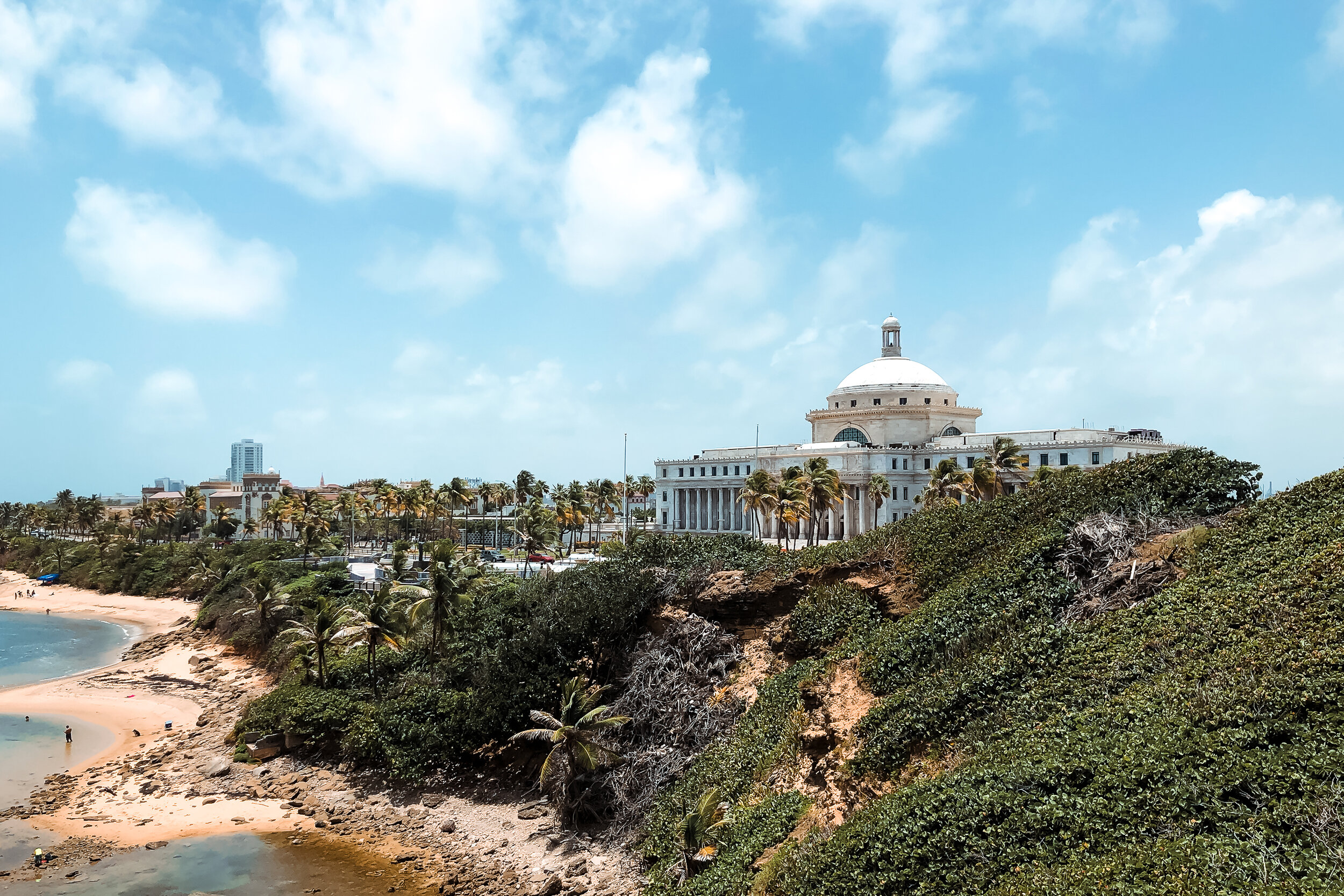
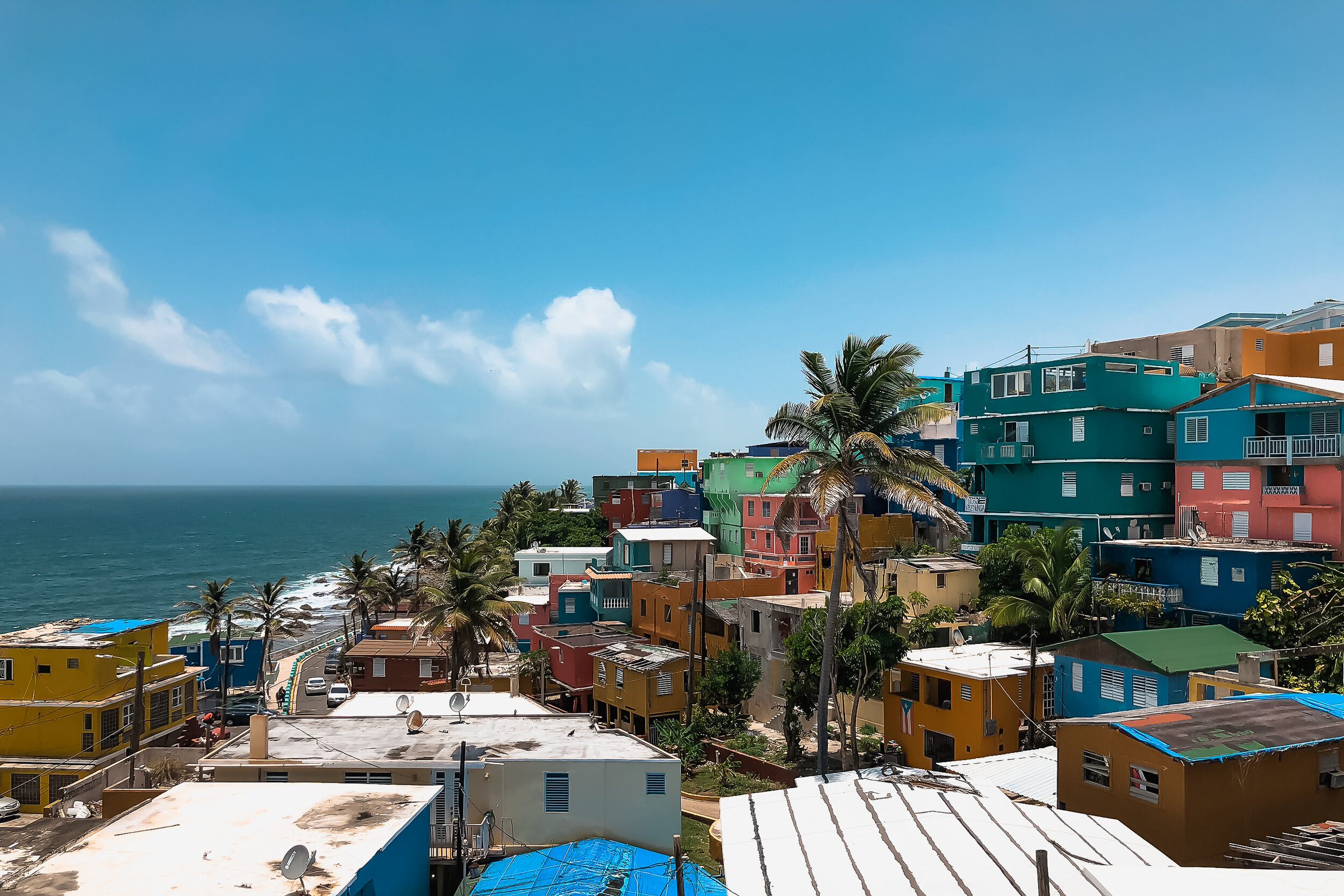

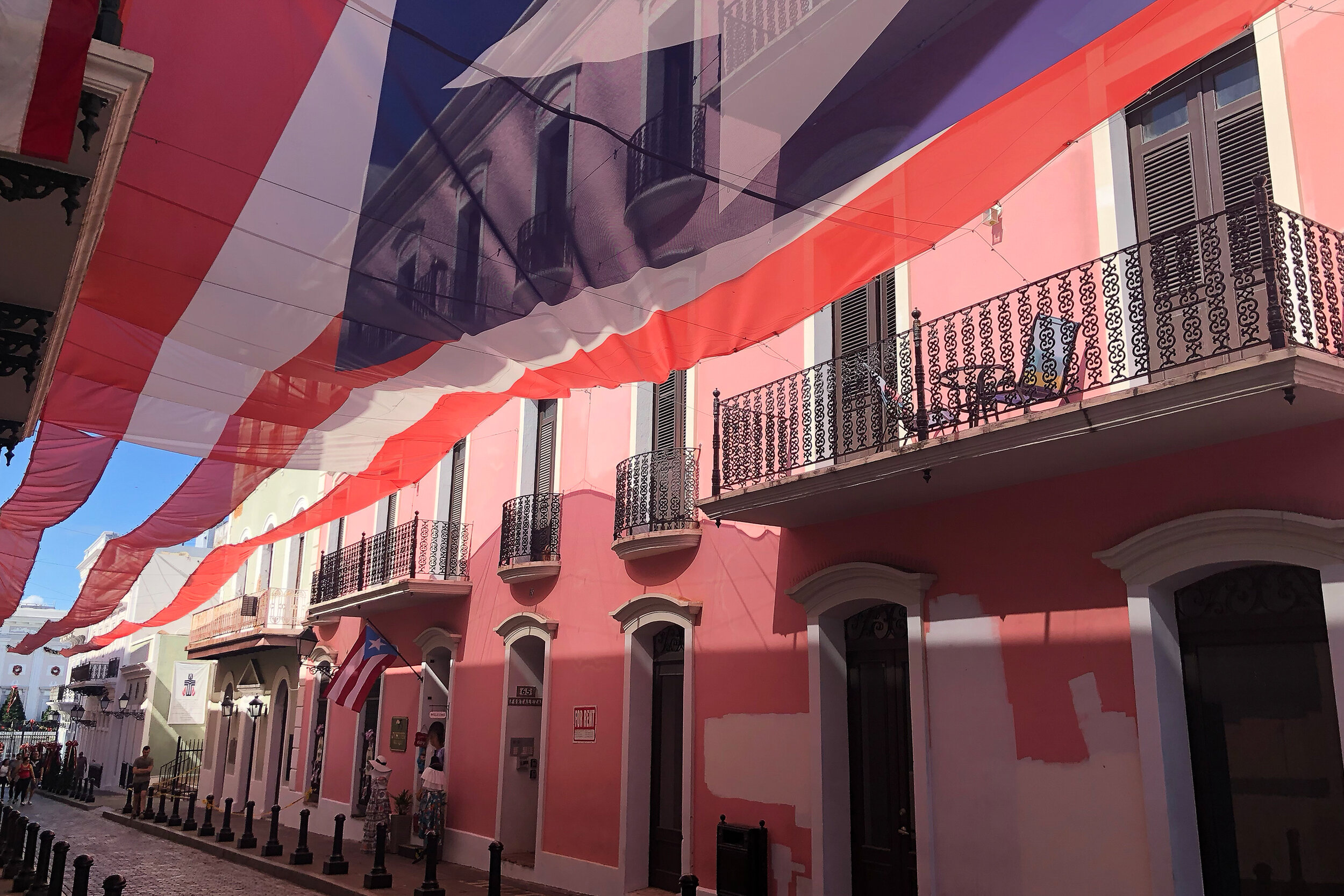

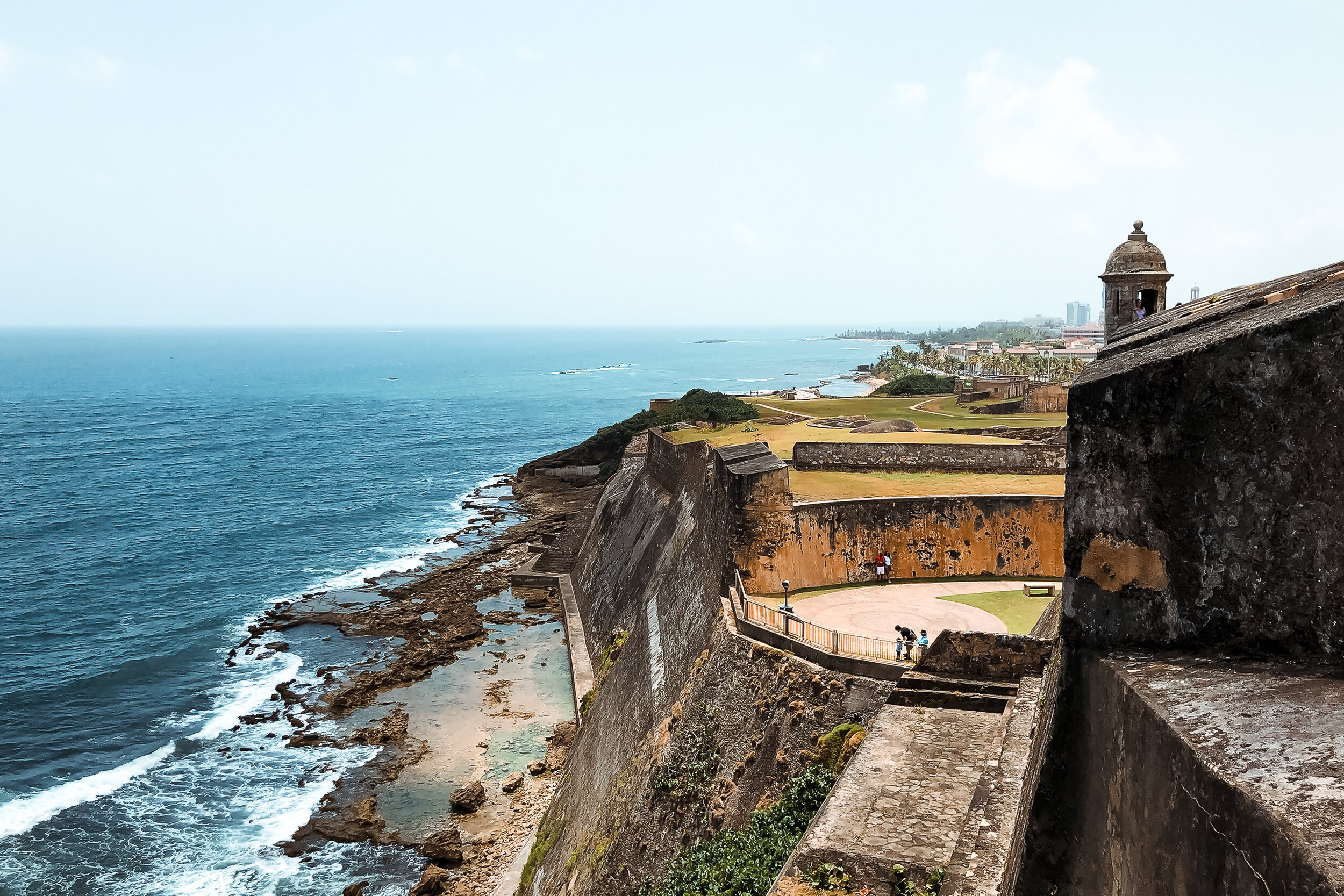
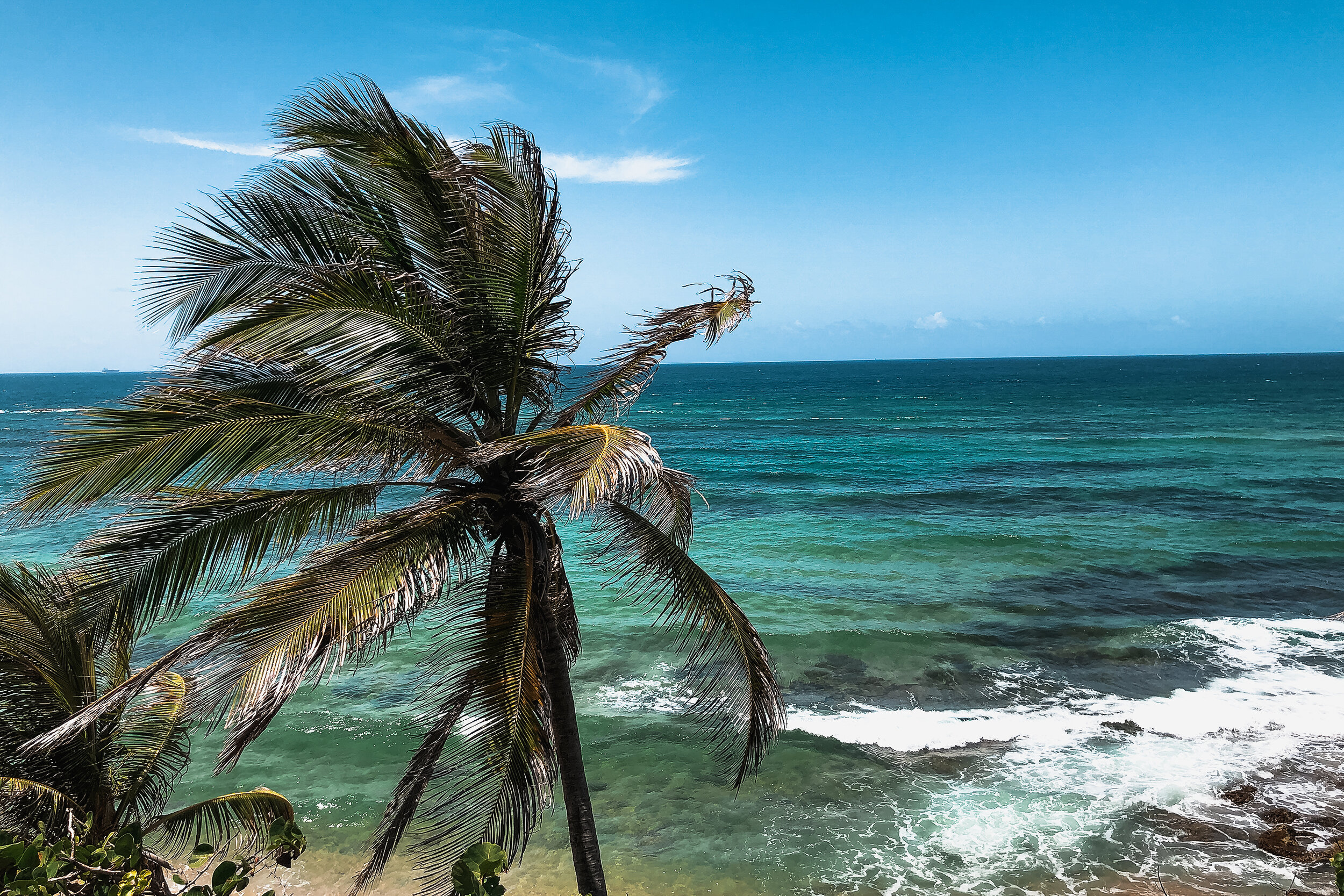
Puerto Rico is the most accepting island in the Caribbean towards LGBTQ+ travelers. Though not a prominently gay destination, Old San Juan and the surrounding area has countless accommodations, restaurants, bars and beautiful beaches that will make you feel welcomed. You’ll often see other gay locals and tourists openly enjoying themselves. The old town is a sunny and vibrant place known for its rainbow of colorful buildings, blue cobble stone streets and colonial fortresses. It makes for romantic evenings together or tireless nights out, especially on Calle de San Sebastian. Across the island and off shore are many other worthwhile places to visit such as Rincon, Culebra and Vieques. Come here to sip on a rum spiked drink, sit under the shade of a palm tree, learn to dance the salsa in a plaza, witness the bioluminescent algae and go on an adventurous hike through El Yunque rainforest. The energy of the people, the flavors of the food and the natural beauty to be seen everywhere on the island continues to draw us back. Having visited multiple times and eager to return, it’s no wonder the island’s motto is La Isla del Encanto, the Island of Charm.
Bogota, Colombia



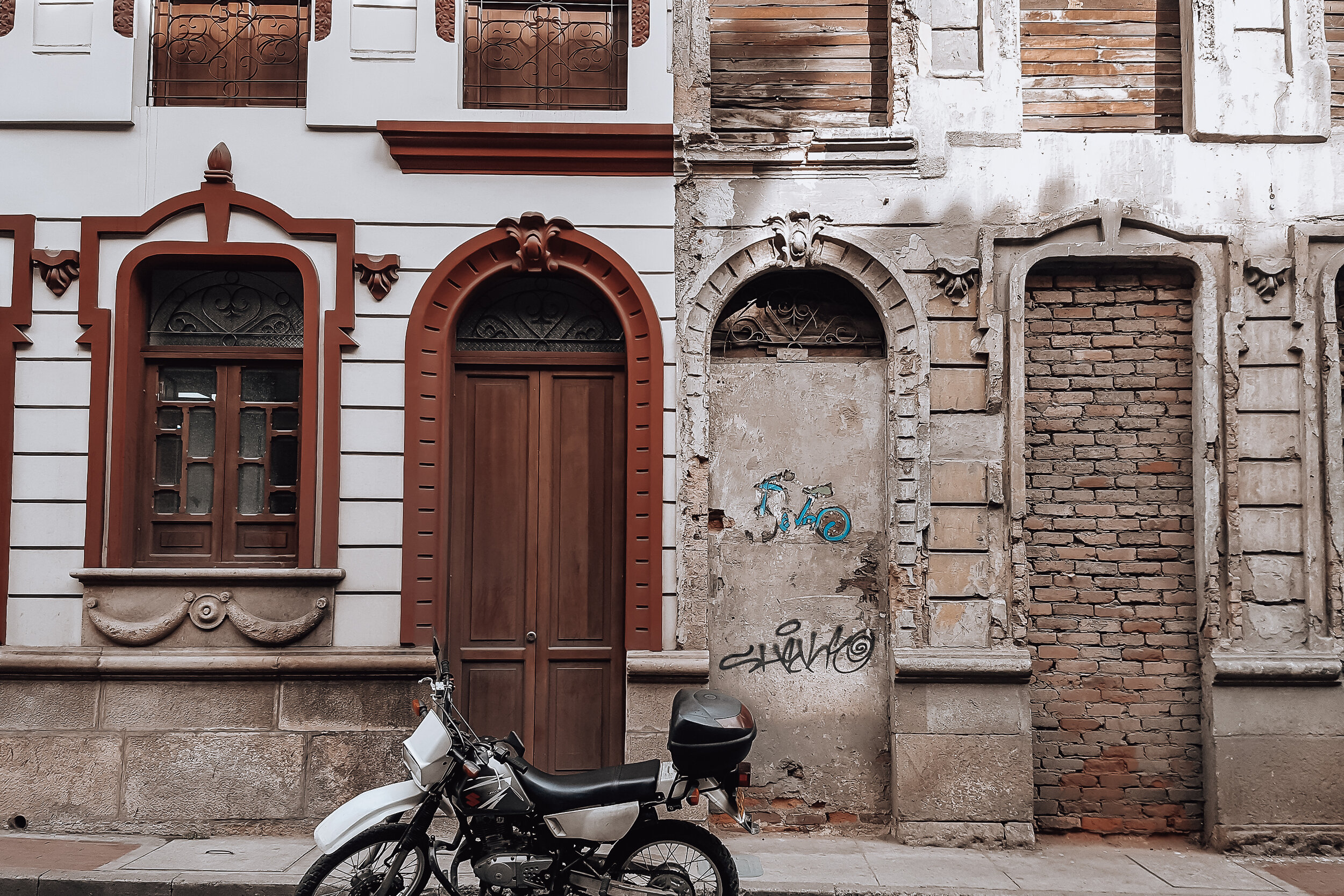


Bogota is one of the most welcoming cities for LGBTQ+ rights in South America. It is the first city on the continent to elect an openly lesbian major. It’s known for is cultural diversity, tolerant society and sprawling neighborhoods. Chapinero, the queer hub within the city boasts an array of trendy businesses, authentic accommodations and nightlife - most notably, Theatron, the largest and most diverse hub for LGBTQ+ nightlife in South America. Throughout Bogota, there is an array of incredible restaurants and cafes around every corner. Apart from the queer scene, the city has many historic sights, museums and parks all worth exploring. The culture, cuisine and people make this city so memorable for not just queer travelers but anyone who visits.
Puerto Vallarta, Mexico





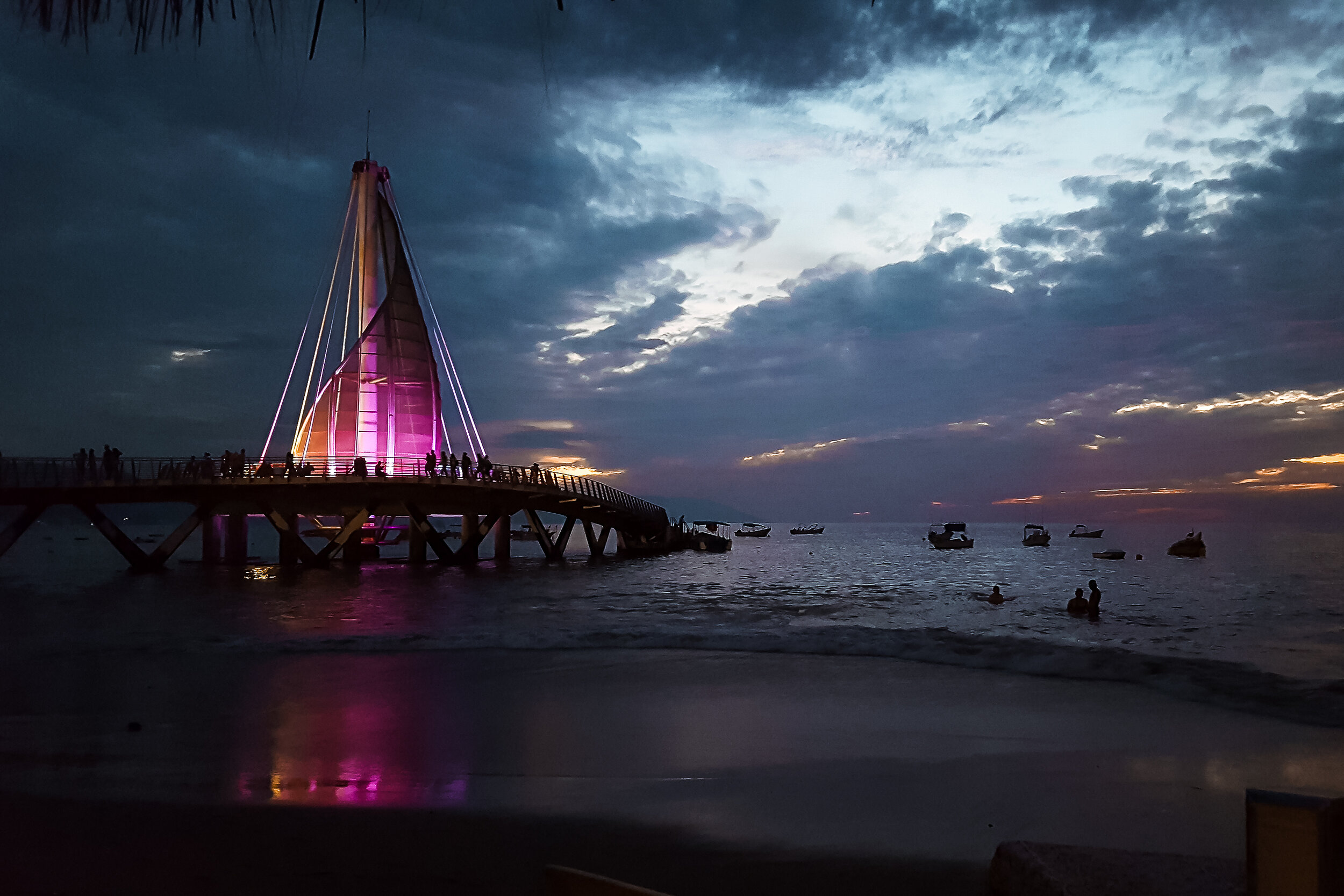
Puerto Vallarta is a popular destination for LGBTQ+ travelers. If you want to travel to a town where you’re surrounded by rainbows and will blend in why the other gays of all ages, this is the destination for you. We came here with one of our best friends, Wayne, for his 60th birthday. The bayside city is home to a charming old town and gayborhood, Zona Romantica. Within the city are great beaches, cobble stone streets, an amazing culinary scene and many queer owned businesses. The locals, large number of them gay expats, are incredibly welcoming and used to seeing queer travelers throughout the year. There is a vast range of gay bars, all with their own unique vibe. It’s fun to visit each one and discover a favorite for yourself. There are countless gay swimwear shops where you can strip down and test out your beach look. Playa de los Muertos is the main gay beach with chair rentals, amazing food options and beautiful sunsets. There are multiple nearby fishing towns, tequila distilleries and coffee producers worth visiting. Whether you choose to relax on the beach, take excursions outside the city, enjoy the nightlife or all of the above, this destination makes for a lively and relaxing gay friendly getaway.
Chicago, Illinois
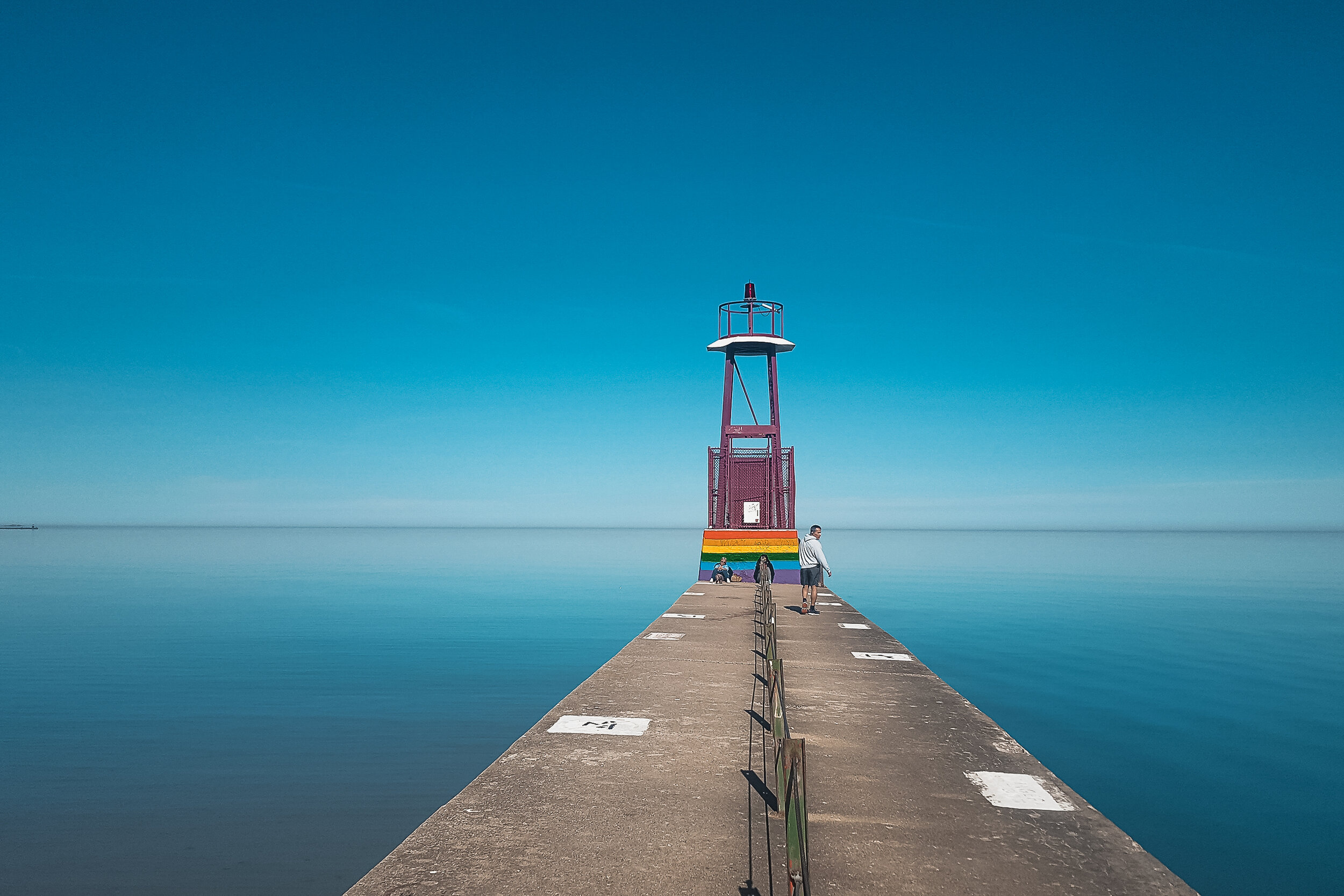


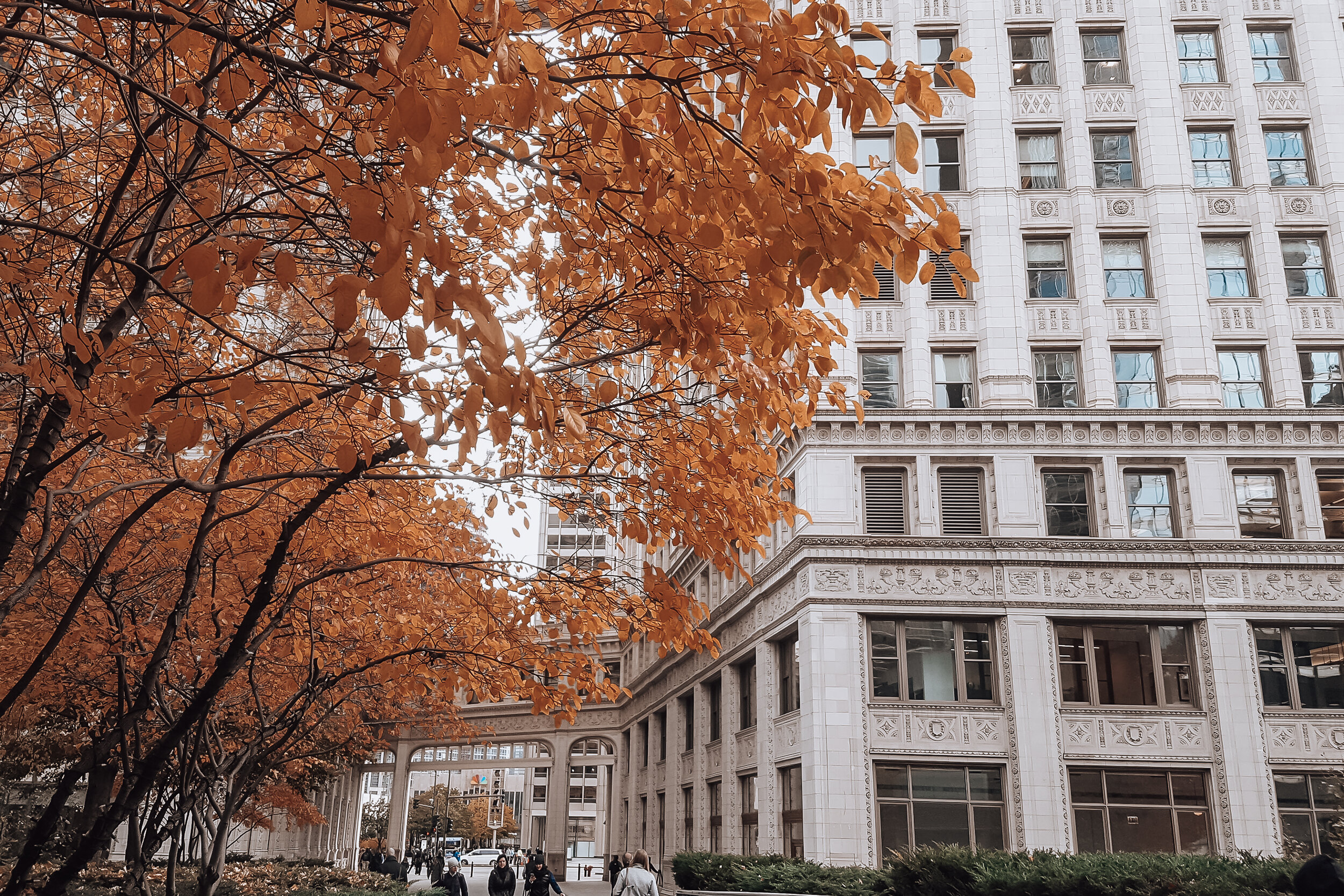

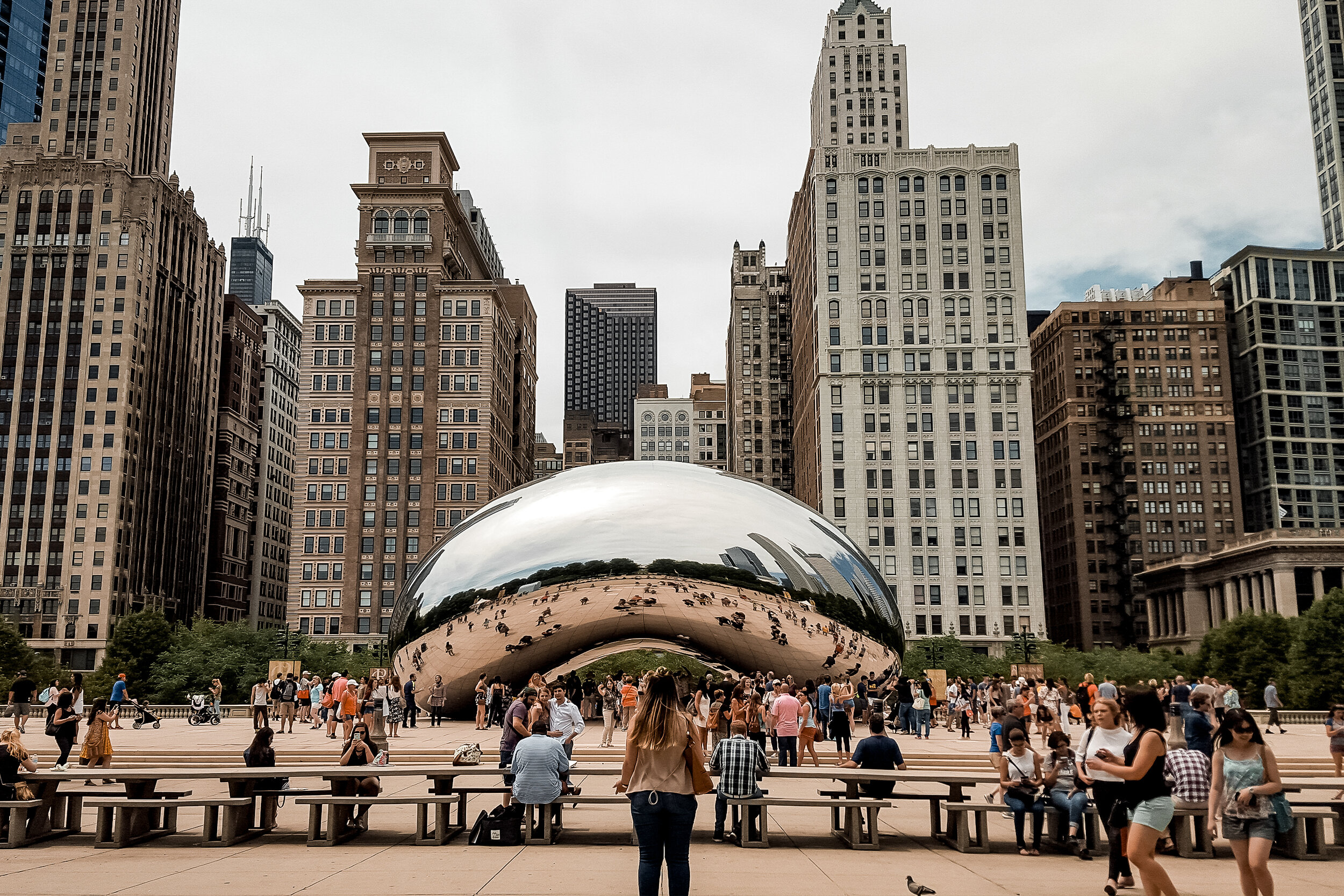
Chicago is a very liberal city and midwestern hub for the LGBTQ+ community. There are many gay friendly neighborhoods and places to visit around the city but Boystown is by far the gayest. Boystown is an expansive gayborhood lined with cocktail bars, brunch spots, gay clothing shops, drag queens, go go dancers and rainbows. Outside of Pride, one of the most neighborhood’s largest events is called Market Days. It’s essentially a month’s worth of Pride events crammed into one weekend. During the summertime, Hollywood Beach along Lake Michigan, rivals some of the countries most famous gay beaches. It’s the perfect place to get some sun after brunch before going back out. Outside of the gay scene, Chicago is known for its range of culinary delights, dramatic architecture and elevated trains. Having lived here for 4 years, we strongly recommend you visit this incredible city. Fare warning, be prepared for arctic temperatures if visit during the winter.
LGBTQ+ Travel Tips
Gayborhood. Seek out your destination’s gayborhood
Research. Look up your destinations views towards LGBTQ+ people. We are welcomed and accepted in many places but persecuted and criminalized in others.
Discover. Seek out LGBTQ+ friendly places. Always keep an eye out for symbols (queer flags, equality stickers, etc)
Pride. Many places host Pride events at different times of the year. A local price event may coincide with your travel dates.
Reviews. Read the reviews and leave your opinion for LGBTQ+ travelers to know if it’s a safe place or not.
LGBTQ+ Travel Resources
Below is a list of resources we have referenced before traveling:
IGLTA (International Gay and Lesbian Travel Association) They’re known for advancing LGBTQ+ travel, offering guides, promoting events and tours. Visit here.
Mister B&B. Offers access to LGBTQ+ friendly accommodations. Visit here.
GayTravel.com. Provides resources and guides for LGBTQ+ travelers. Visit here.
Equaldex. Provides knowledge about the rights of LGBTQ+ community in all countries. Visit here.
Other Travel Blogs. Great resources for LGBTQ+ guides across hundreds of cities around the world.
Mr Hudson Explores. Visit here.
Two Bad Tourists. Visit here.
GayCities.com. Visit here.
Queer In The World. Visit here.
Why Travel is Important
Travel is important for so many reasons. It cultivates connections, builds empathy, makes us more worldly and appreciative of other cultures.
Our Perspective
Travel is important for so many reasons. It cultivates connections, builds empathy, makes us more worldly and appreciative of other cultures. Traveling becomes a part of our own self discovery.
On our first international trip together, to Foz do Iguacu in Brazil, we met another gay couple from Peru on a city bus tour. They didn’t speak English and our Spanish wasn’t the best but we kept chatting as we toured the city. We ended up spending the entire day together, laughing, enjoying meals and becoming friends before going our separate ways. The following year, they invited us to visit them in Peru. During the week we visited, we stayed at their home, with their relatives, toured Lima where they live and explored the Peruvian coast visiting numerous towns by bus. To this day, that week is one of our most memorable of times. You can read more about our adventures along the Peruvian Coast here.
These types of connections that are so important to make while traveling. Our first two trips together have driven our passion for travel, exposed us to new ideas, allowed us to welcome unique experiences, given us the opportunity to make friends abroad and celebrate our cultural differences and diversity.
Responsible Travel
A level of responsibility comes with traveling. Travel allows us to step outside of our comfort zone, build empathy and expand our world view.
Our Perspective
As a citizen of the world, a level of responsibility comes with traveling to different destinations. You should be open-minded to other cultures, peoples, ways of living and perspectives. Travel allows us to step outside of our comfort zone, build empathy and expand our world view. In our opinion, it’s what makes every trip so memorable.
Responsible Travel Tips
Below are some things we’ve learning while traveling. We hope they’ll be useful to you on your adventures.
Remember that you’re a guest in a foreign land, be respectful of local customs, laws and traditions.
Read up on local customs, foods and phrases. Having an understanding of the culture before arriving will make your experience more authentic.
Knowing a few phrases in the local language or dialect always goes a long way. Saying hello, thank you, good-bye shows locals you have an interest in them and their culture.
Often, many people in the tourist or hospitality industries will enjoy conversation and practicing speaking with you. Be patient and open to the conversation.
Always be cautious when taking photographs of sights and people, you should ask first if you’re unsure.
Get cultured. Visit museums and learn about your destination’s history, art and heritage.
Support local businesses. Whether a corner cafe, a hostel, a solo tour guide, a boutique, etc… Locals often thrive on a healthy level of tourism.
Try to visit off the beaten path places to avoid over tourism or consider traveling to trendy destinations during the off season.
Know if you need a Visa or not before entering a country.
Recycle, compost, and manage your personal waste responsibly. Pollution is a serious issue around the world and we can all do our part to reduce it.
Be open to new perspectives. Many cultures live differently than you might. Our differences are what makes us all so unique. Use these opportunities to learn.
Always have your host country’s currency on hand. Many places don’t accept credit, especially when you’re in remote areas.
Know the value of the local currency compared to yours. It helps with budgeting, spending and tipping.
Know if it’s acceptable to tip after meals or drinks. Research how much to tip.













